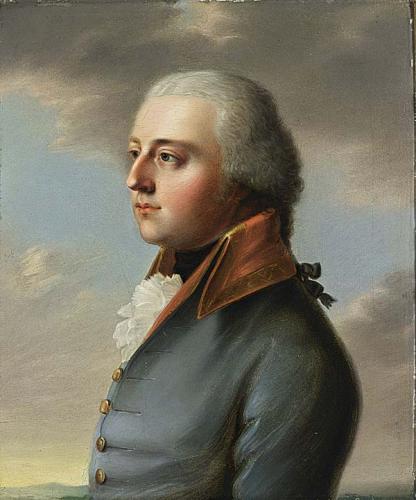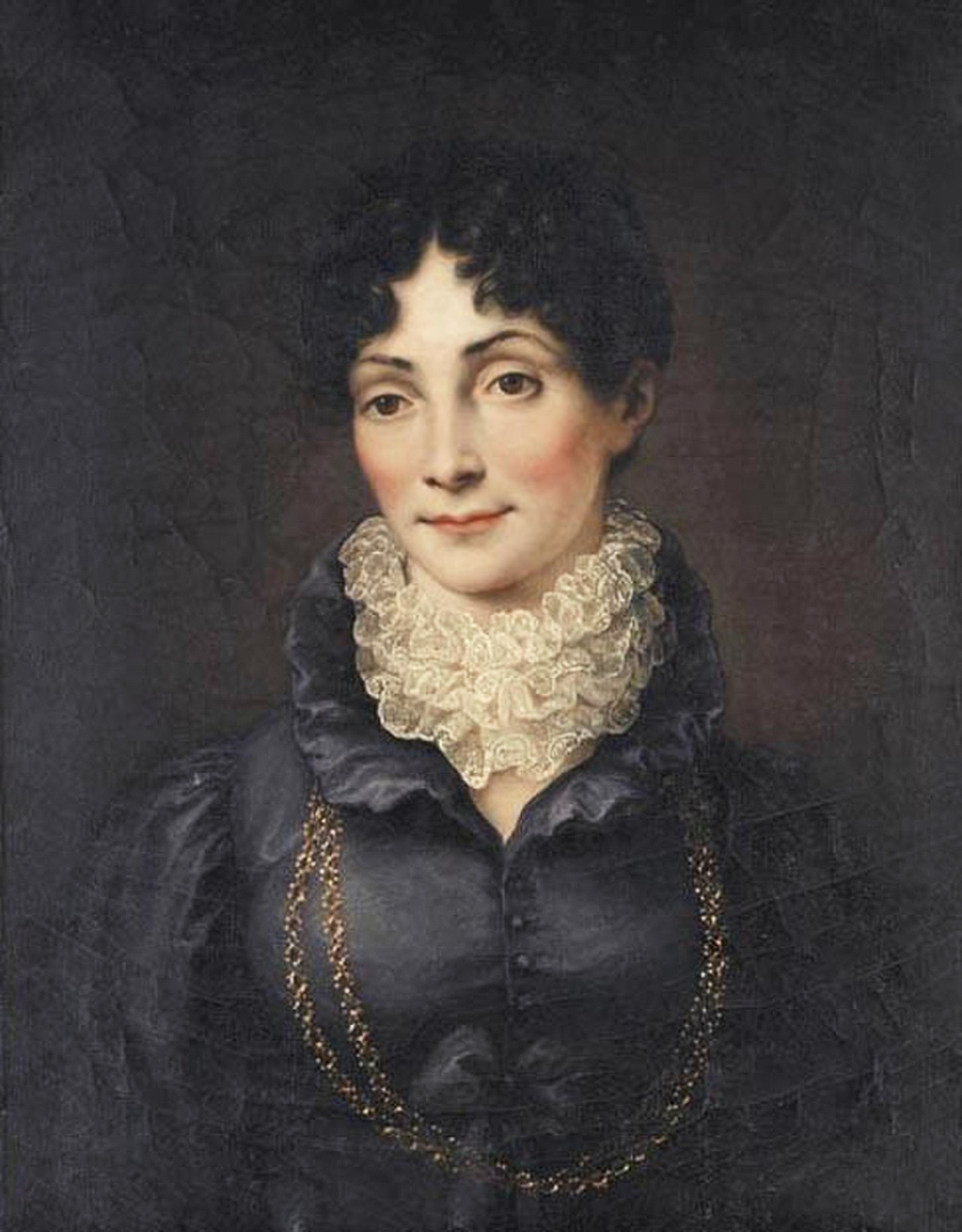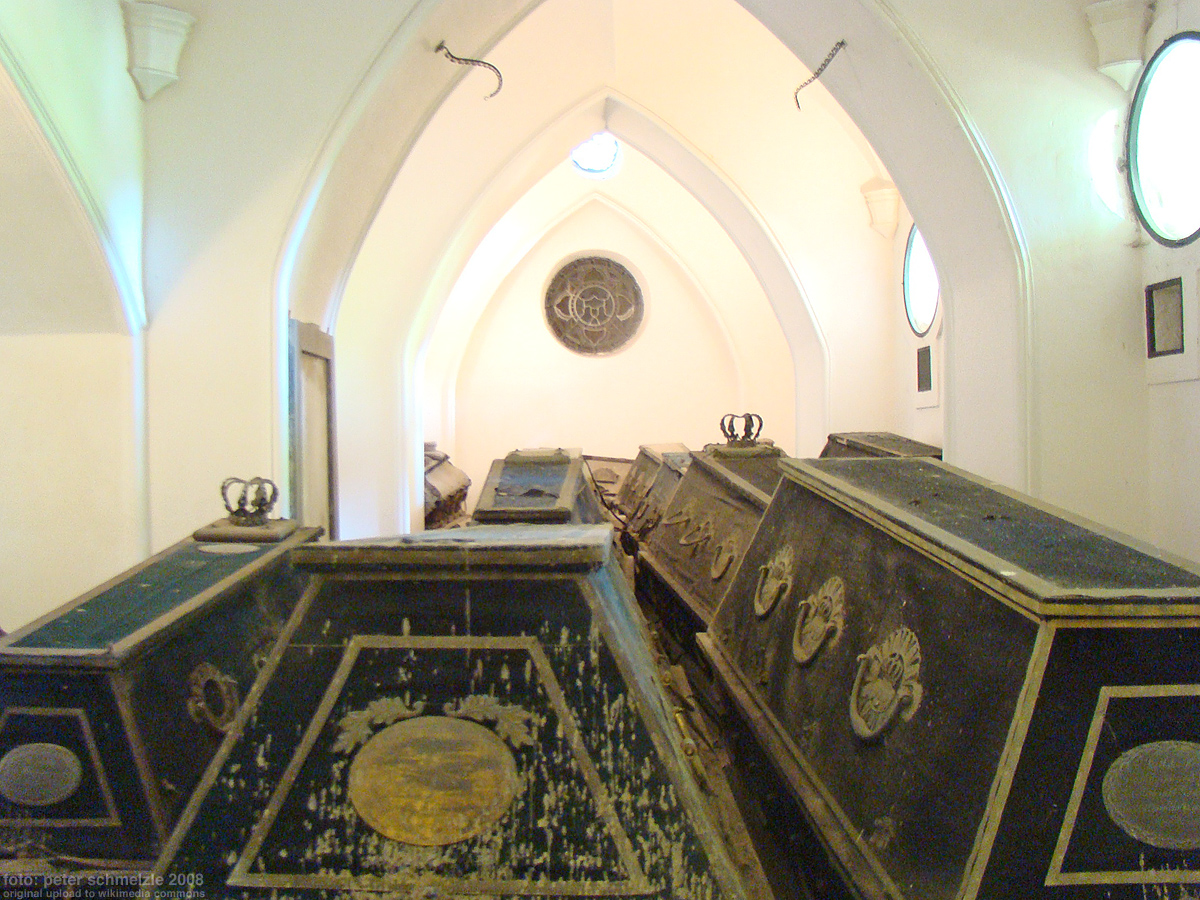by Susan Flantzer © Unofficial Royalty 2019

Caroline Mariane of Mecklenburg-Strelitz, Crown Princess of Denmark; Credit – Wikipedia
Caroline Mariane was the second wife of the future King Frederik VII of Denmark. Born in Neustrelitz in the Grand Duchy of Mecklenburg-Strelitz, now in Mecklenburg-Vorpommern, Germany, on January 10, 1821, she was the second of the two daughters and the third of the four children of Georg, Grand Duke of Mecklenburg-Strelitz and Marie of Hesse-Kassel.
Caroline Mariane had three siblings:
- Luise of Mecklenburg-Strelitz (1818–1842), unmarried, died of tuberculosis at age 24
- Friedrich Wilhelm, Grand Duke of Mecklenburg-Strelitz (1819–1904), married Princess Augusta of Cambridge, had one surviving son Adolf Friedrich V, Grand Duke of Mecklenburg-Strelitz
- Georg August of Mecklenburg-Strelitz (1824–1876) married Grand Duchess Catherine Mikhailovna of Russia, had four children
In 1839, King Christian VIII of Denmark succeeded to the Danish throne. His son Frederik, who had divorced his first wife, was now Crown Prince and needed to marry again. He heard about Caroline Mariane who had been taught Danish by a Danish poet and thought she might make a good wife. 33-year-old Frederik and 20-year-old Caroline Mariane were married in Neustrelitz in the Grand Duchy of Mecklenburg-Strelitz on June 10, 1841. On June 21, they arrived in Denmark and made a festive entrance in Copenhagen.
The marriage was childless and unhappy. Frederik’s bad temperament, excessive drinking, and shameless womanizing put a great strain on Caroline Mariane. She was young, inexperienced, shy, and nervous, and no match for Frederik’s boisterous personality. In 1844, Caroline Mariane visited her parents and refused to return to Denmark. The couple divorced on September 30, 1846. The divorce documents stated: “The divorce was due to the inherited morbidity and broken health of the Princess.” The truth was that Caroline Mariane had been completely run down by her husband’s wild and unbearable life and that Frederik was pleased to reconnect with his mistress Louise Rasmussen who became his morganatic third wife in 1850.

Carolinepalais in Neustrelitz; Credit – Von Concord – Eigenes Werk, CC BY-SA 3.0, https://commons.wikimedia.org/w/index.php?curid=31904684
Caroline Mariane lived quietly in Neustrelitz where her parents built the Carolinenpalais for her in 1850. She retained her Danish titles after her divorce and never remarried. Nor did Caroline Mariane ever speak about her former husband except when she described him to Danish visitors as “He was much too bizarre!” In 1860, Caroline Mariane donated funds for the construction of the Carolinenstift, a hospital in Neustrelitz.
Caroline Mariane died in Neustrelitz on June 1, 1876, at the age of 55. She was buried at the traditional burial site of the Grand Ducal Family of Mecklenburg-Strelitz, the Johanniterkirche (Church of St. John) (in German) in Mirow, now in Germany.

The Johanniterkirche in Mirow; Credit – Thomas Kohler – originally posted to Flickr as Kirche Mirow, CC BY-SA 2.0, https://commons.wikimedia.org/w/index.php?curid=12084832
This article is the intellectual property of Unofficial Royalty and is NOT TO BE COPIED, EDITED, OR POSTED IN ANY FORM ON ANOTHER WEBSITE under any circumstances. It is permissible to use a link that directs to Unofficial Royalty.
Works Cited
- Da.wikipedia.org. (2018). Mariane af Mecklenburg-Strelitz. [online] Available at: https://da.wikipedia.org/wiki/Mariane_af_Mecklenburg-Strelitz [Accessed 20 Sep. 2018].
- De.wikipedia.org. (2018). Caroline zu Mecklenburg. [online] Available at: https://de.wikipedia.org/wiki/Caroline_zu_Mecklenburg [Accessed 20 Sep. 2018].
- En.wikipedia.org. (2018). Duchess Caroline Mariane of Mecklenburg. [online] Available at: https://en.wikipedia.org/wiki/Duchess_Caroline_Mariane_of_Mecklenburg [Accessed 20 Sep. 2018].
- Flantzer, S. (2018). King Frederik VII of Denmark. [online]. Unofficial Royalty. Available at: https://www.unofficialroyalty.com/king-frederik-vii-of-denmark/ [Accessed 19 Sep. 2018].

















